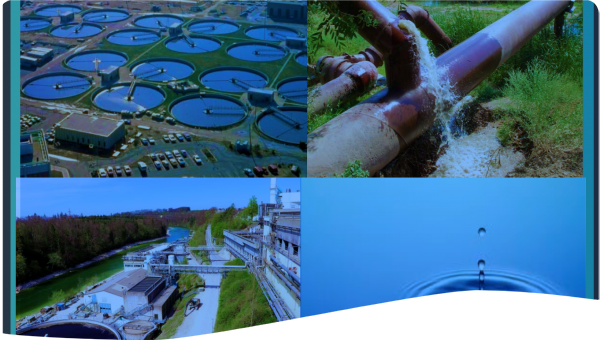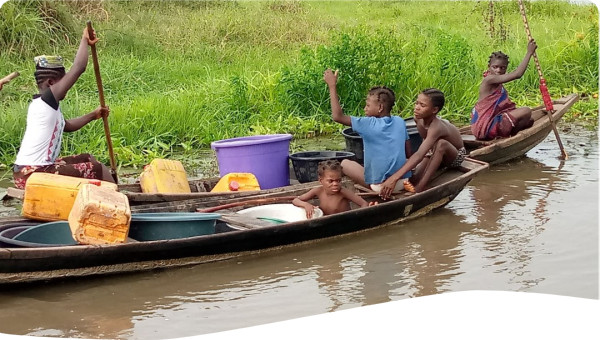 Tool -
Tool -
The key elements of an allocation regime can be divided into “system-level” elements and “user-level” elements (Young, 2013). System-level elements include those issues that are most efficiently and equitably dealt with at the scale of a water resource (be it at the basin, catchment, river, stream, or aquifer level). Typically, they take the form of conditions that apply to water resources expressed in water law, water-sharing plans, and other similar policy instruments that determine how system-wide decisions are taken and by whom set out in regional and national legislation. They identify the availability, legal status, and mechanisms for monitoring and enforcement of water resources (Tools A1.02 and A2.01). For instance, in France, Single Collective Management Bodies (Organismes Uniques de Gestion Collective, OUGC) were established to provide an incentive for irrigators to allocate a set volume of water among themselves at the catchment level in an effort to restore the catchment to sustainable abstractable volumes. While the user-level elements of a water allocation regime are those aspects that are most efficiently and equitably dealt with by specifying the arrangements that apply to an individual (or collective) abstractor (Tool A2.01) Typically, these take the form of arrangements specified in entitlements, permits, and licenses (OECD, 2015). Figure 1 shows the Key elements of the water allocation regime.
Figure 1. Key Elements of a Water Allocation System (OECD, 2015)
Allocation regimes generally have an established sequence of priority uses. They are used to establish priority access in cases where there is competition for access to water even in average conditions or even in exceptional conditions such as during times of scarcity, and drought. Allocation regimes in a number of countries define water uses for domestic and human needs and national security purposes among the sequence of priority uses. Exceptions include the Netherlands, a small number of Canadian Provinces, and water uses in Israel and Peru. In the Netherlands, for example, safety (preventing dyke collapse) and preventing irreversible damage to the environment are the highest priority use. The most commonly reported second priority is either agriculture or environmental uses. Furthermore, some allocation regimes have a very detailed designation of priority uses (6 distinct levels in the case of Hungary, Mexico, and Peru; 5 distinct levels in the case of Spain and South Africa) (OECD, 2015). The various ways in which the sequence of priority uses is defined across the allocation regimes surveyed are summarised in Figure 2.
Figure 2. Sequence of Priority Uses in Selected Countries (OECD, 2015)
However, in allocating water for consumptive uses, a clear limit, or “cap”, on abstractions, must be set which can be adjusted over time as circumstances change. Hence, the definition of an explicit and enforceable limit (or “cap”) on abstraction is a key element of a robust allocation regime. This “cap” may be defined in absolute, volumetric terms or as a proportion of available resources. While a significant majority of allocation regimes (92%) have a clear definition of the limit on consumptive use, few rely on flexible limits (defined in terms of the proportion of the resource that can be abstracted, instead of a fixed volume (OECD, 2015). A wide range of methodologies, from simple rules of thumb to more sophisticated approaches, have been adopted in several allocation regimes (OECD, 2015).
Additionally, return flow obligations in water entitlements should be set to provide an accurate reflection of the proportion of water consumed and the proportion potentially available for another use (depending on the extent to which the location and quality have changed). Return flows consist of the water physically withdrawn from a system and returned to the same or a different body following use. To determine the “cap” and “return flows” the doctrine of reasonable use should be used as part of the decision-making process. This doctrine emphasizes the reasonable and beneficial use of water by individuals, taking into account the needs of society, the economy, and the environment. It is based on striking a balance between competing water users and preventing wasteful or harmful practices (Waters & Spritzig, 2018). The doctrine of reasonable use is also used to define the scope of riparian water rights (Tool A2.01).
In order to improve current allocation arrangements, efficiency of resource use and equity in allocation of water resources, countries embark on reform. The rationale for this reform could be driven by an accumulation of factors, and shift in the focus of policy objectives which can be dynamic over time. These drivers include water scarcity, shifting societal values, environmental concerns, and economic efficiency (allocating water on the basis of perceived economic value) among others. Market instruments can be adopted as instruments for driving this water allocation regime reform (Tool C4.02). Examples of drivers in selected country experiences are given below:
- Water Scarcity: In Alberta, Canada, concerns about meeting future water requirements arose with increasing urban development (notably in the southern half of the province) and a drought in 2001-02. The situation prompted a review of the Water Resources Act of 1931 took five years and resulted in the enactment of the Water Act of 1999. Also, the issuance of new water licenses in certain basins was halted by the authorities and a mechanism that allowed existing licenses to be transferred among users was established (de Loë, R.C. et al., 2007); Mahan, R.C. et al., 2002)
- Environmental and Ecological Concerns: In England and Wales strains on the environment due to pressures on water resources, the growing recognition of the scarcity of resources (counter-intuitive to the perception of England as a wet country) and the unacceptability of dry rivers, led to calls for reform in the early 1990’s. This was achieved in 2011 after years of procedural delays when the government published the White Paper “Water for Life”, which included firm proposals for abstraction reform. Crucially, it was supported by “The Case for Change”, which was an assessment by the Environment Agency of the potential impact on water availability of climate change, coupled with increased demand for water from population growth and energy supply (OECD, 2015).
- Shifting Societal Values: The primary driver of water allocation reform in South Africa was driven by the need to transform a society in which the black majority had been excluded from access to natural resources (including water) or the benefits derived from such natural resources. This happened during the political transition to democracy in 1994 and formed part of a broader suite of legislative reforms aimed at fundamentally transforming the South African political and economic context. The water allocation reform proposed in the 1997 White Paper on a National Water Policy for South Africa, and the ensuing National Water Act were aimed at addressing this historical injustice ( Movik, S. (2009); Muller, M. (2013)
- Economic Efficiency: In Chile, the economic liberalisation of 1973-89 was a key driver of water reforms in the 1980s. The economic paradigm had shifted from a state-controlled economy to an emphasis on market-based approaches (Tool C4.02). This led to the enactment of the Water Code of 1981 which sought to remove these constraints and created legally defined tradable water use rights to facilitate economically beneficial reallocation of water (Bauer, 2004; Büchi, 1993; Hearne and Donoso Harris, 2005) (Tools C4.01 and D1.02)
The OECD (2015)’s “Health Check for Water Resources Allocation” is a comprehensive framework that can be used to evaluate the performance of a water allocation arrangement according to its specific context. The health check looks at whether the elements of a well-designed allocation regime are in place and identifies areas for potential improvement. This can be applied to various scales of water governance, depending on the context. For example, it can be used at the national, provincial/state, or river basin level, or used for a specific irrigation district. The following checks can be used as starting point to assess the current performance of current allocation arrangements (OECD, 2015):
Check 1. Are there accountability mechanisms in place for the management of water allocation that are effective at a catchment or basin scale?
Check 2. Is there a clear legal status for all water resources (surface and ground water and alternative sources of supply)?
Check 3. Is the availability of water resources (surface water, groundwater and alternative sources of supply) and possible scarcity well-understood?
Check 4. Is there an abstraction limit (“cap”) that reflects in situ requirements and sustainable use?
Check 5. Is there an effective approach to enable efficient and fair management of the
risk of shortage that ensures water for essential uses?
Check 6. Are adequate arrangements in place for dealing with exceptional circumstances (such as drought or severe pollution events)?
Check 7. Is there a process for dealing with new entrants and for increasing or varying existing entitlements?
Check 8. Are there effective mechanisms for monitoring and enforcement, with clear and legally robust sanctions?
Check 9. Are water infrastructures in place to store, treat and deliver water in order for the allocation regime to function effectively?
Check 10. Is there policy coherence across sectors that affect water resources allocation?
Check 11. Is there a clear legal definition of water entitlements?
Check 12. Are appropriate abstraction charges in place for all users that reflect the impact of the abstraction on resource availability for other users and the environment?
Check 13. Are obligations related to return flows and discharges properly specified and enforced?
Check 14. Does the system allow water users to reallocate water among themselves to improve the allocative efficiency of the regime?




